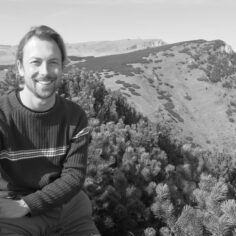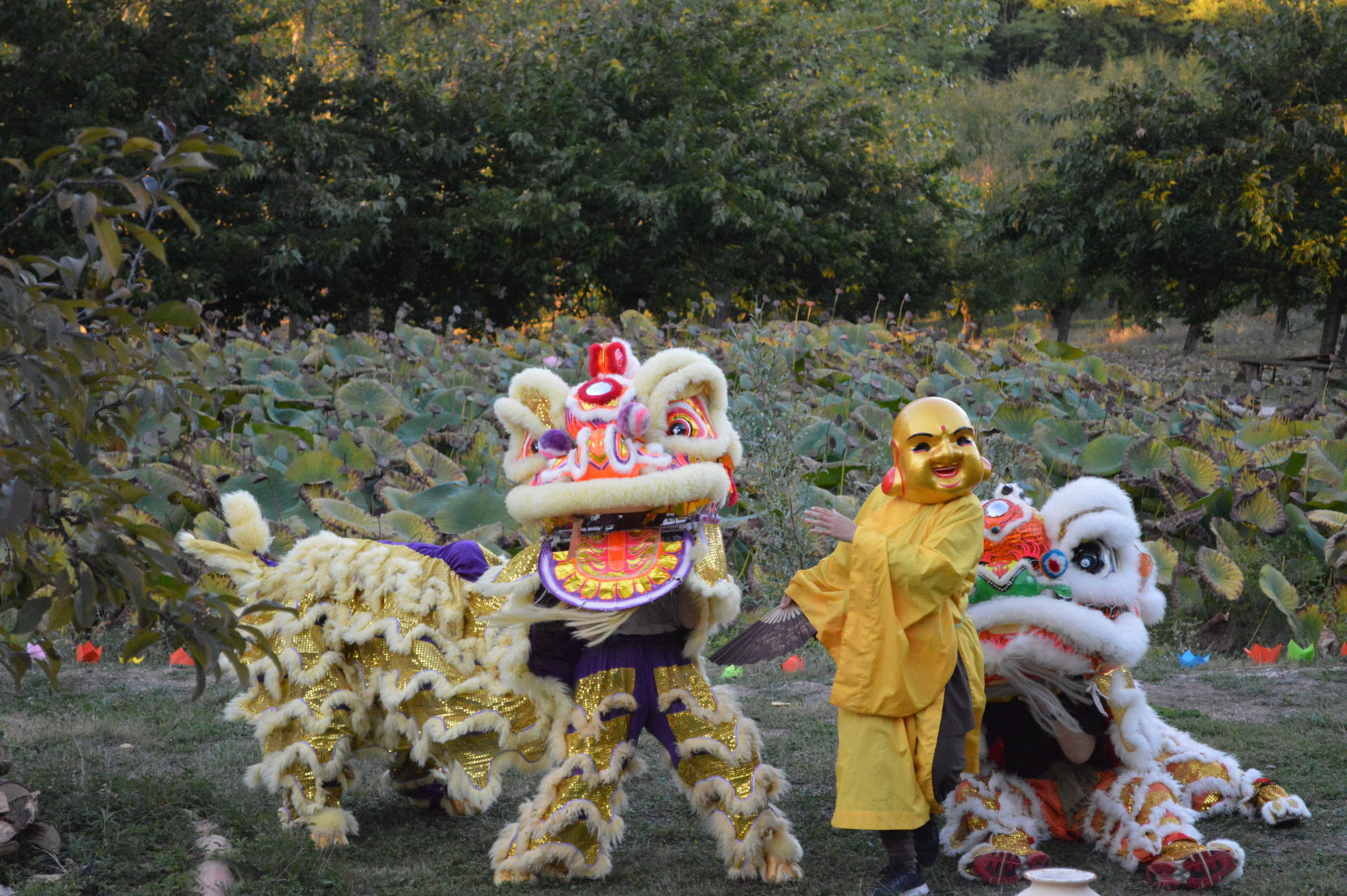Impressions, Experiences, and Interviews
By David Viafora and Vanessa Ixil Chavez Loucky
By David Viafora in February 2019
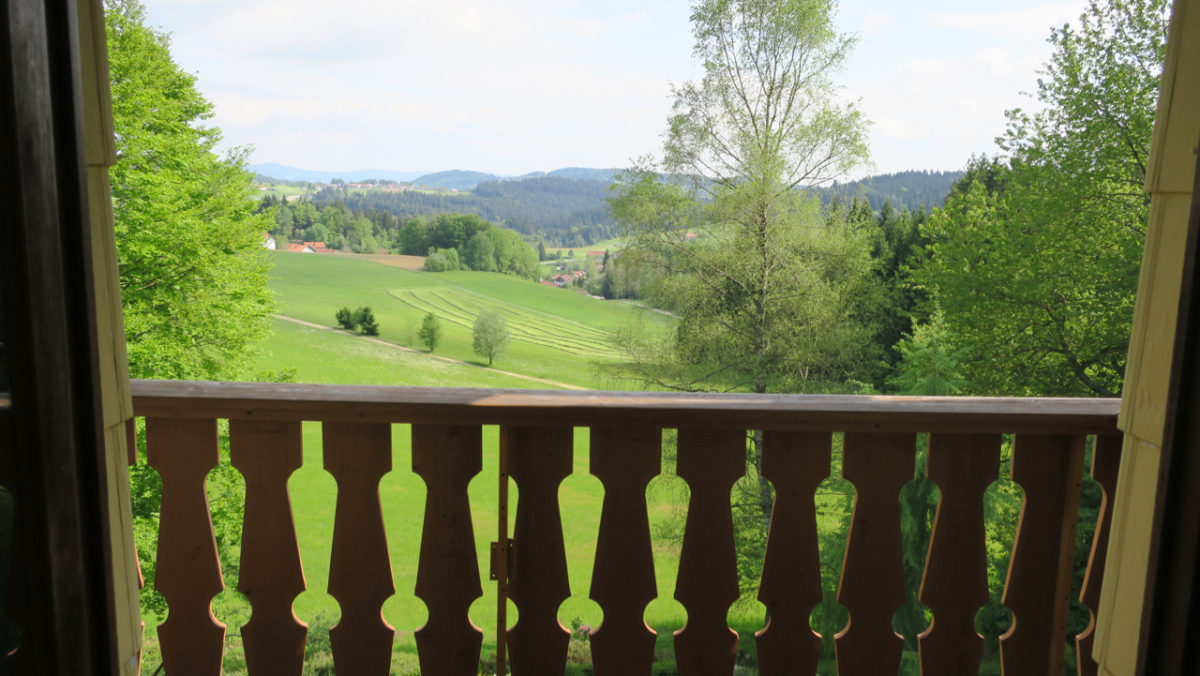
“We need to establish retreat centers where we can go from time to time to renew ourselves. The features of the landscape, the buildings, and even the sound of the bell can be designed to remind us to return to awareness.
Impressions, Experiences, and Interviews
By David Viafora and Vanessa Ixil Chavez Loucky
By David Viafora in February 2019

“We need to establish retreat centers where we can go from time to time to renew ourselves. The features of the landscape, the buildings, and even the sound of the bell can be designed to remind us to return to awareness. The residential community there does not need to be large. Ten or fifteen people who emanate freshness and peace, the fruits of living in awareness, are enough. When we are there, they care for us, console us, support us, and help us heal our wounds. Even when we cannot actually go there, just thinking of the center makes us smile and feel more at peace.”
—Thich Nhat Hanh
Intersein-Zentrum in southeast Germany is the oldest, largest, and perhaps most robust lay residential practice center in the Plum Village tradition. Dharma teachers Karl Schmidt and Helga and Karl Riedl co-founded Intersein in 1998. Intersein sits at the border of the Bavarian forest, one of Europe’s largest national parks. Helga and Karl lived in Plum Village for six years, which paved a foundation for Intersein.
Helga: I remember being in Plum Village in 1993, and Thay said, “The noblest task you can do is build a community. The noblest task is building a community that can reduce the suffering in the world, and be there for people to transform.” But first we have to transform, and then we’ll be able to help people transform. After six years in Plum Village, we thought, “This is our life now, and we want to do in Germany what we experienced in Plum Village.” Our vision was to live the kind of life Thay lived.
As we strolled among the rolling Bavarian hills on a ripe May afternoon and walked across a grassy field, we thought, “It’s no wonder Intersein has so successfully attracted retreatants and residents. The environment here is pure magic!” We walked slowly around the property, soaking in sights of gardens, ponds, white-stoned dry river beds, small sitting Buddha statues, and towering trees.
Entering the building, we encountered a cool, softly lit room filled with natural, gentle sounds of cascading water, and Thay’s calligraphy:
Ich bin angekommen, Ich bin zuhause. (I have arrived, I am home)
We immediately felt at home. In this setting, the mind naturally calms, leaving hurry and worries behind, and relaxation sets in. Over the next four weeks, we joined the deep community practice and met Helga and Karl individually three times in their simple quarters (formerly, Thay’s personal “Intersein hut” when he came to teach.) Here are some of their stories.
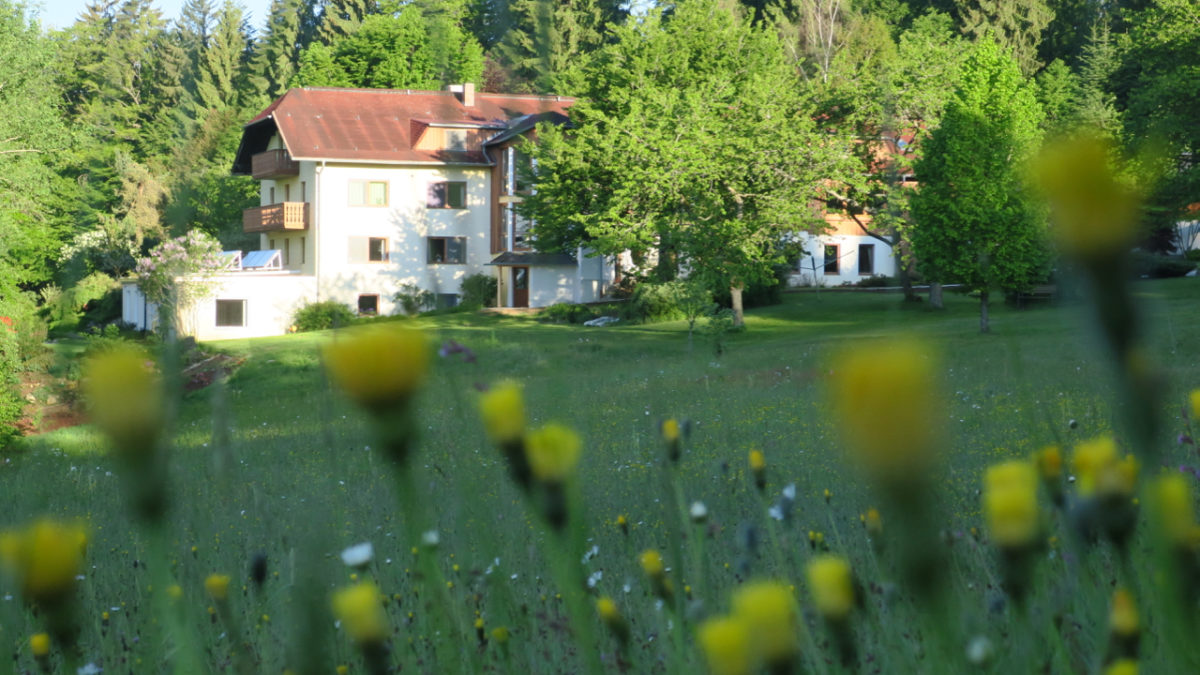
Laying the Foundation
Helga Riedl: It all began in 1992. We had moved to Italy, to study, and learn in the Tibetan-Buddhist tradition at the Lama Tsong Khappa Institute in Pomaia, south of Pisa. When Thay and Sister Chan Khong arrived at the Institute in May 1992 to lead a retreat, it was as though we had run into old spiritual friends after a long, long time. Thay’s presence, his teachings, and practice gave us the feeling that we had arrived home after a very long journey. Encouraged by Sister Chan Khong, we took part in the three-week June Retreat in Plum Village. At the end we knew, ‘This is our spiritual practice, this is the language we understand and want to learn.’ It was clear we needed a Sangha to progress along our chosen path.
The next step was the 1992/93 Winter Retreat to learn what it meant to live in a spiritual community. The cheerful warmth of our Vietnamese Dharma brothers and sisters deeply moved us. We practiced, celebrated with them, and enjoyed Thay’s presence, especially his Dharma talks with the whole community squeezed into the Lower or Upper Hamlet kitchen. When Thay later asked, “Why don’t you just come and live with us?” we decided to move to Plum Village. It was May 1993; our new life had begun.
We had a grand vision of a new, contemplative life with lots of mindfulness, meditation, and transformation until we were finally liberated from all suffering. But, after we had settled in Plum Village for about a week, Sister Chan Khong took us to a small, old farmhouse, rather ruined and rotten. She said, “Someone has donated that to us, and I want you to restore it. You have some time—2 and a half months—until July when the summer retreat opens.” We looked at each other and said, “So that’s the way it’s done around here. Okay, so let’s do it.”
Over the following months, we restored this building with six rooms, a dining room, a small kitchen, and a small meditation hall. It was then called “West Hamlet.” When Thay and the community invited us to take care of this new hamlet, we entered a new phase in our life. For four weeks during the summer as well as Christmas and New Year, we led this small guest-lay community. We were not trained, just kind of thrown into the water. We had to organize food and everything. Slowly, we learned to guide meditations and Dharma discussions, especially during winter. For three years, it was a great time of practice for us.
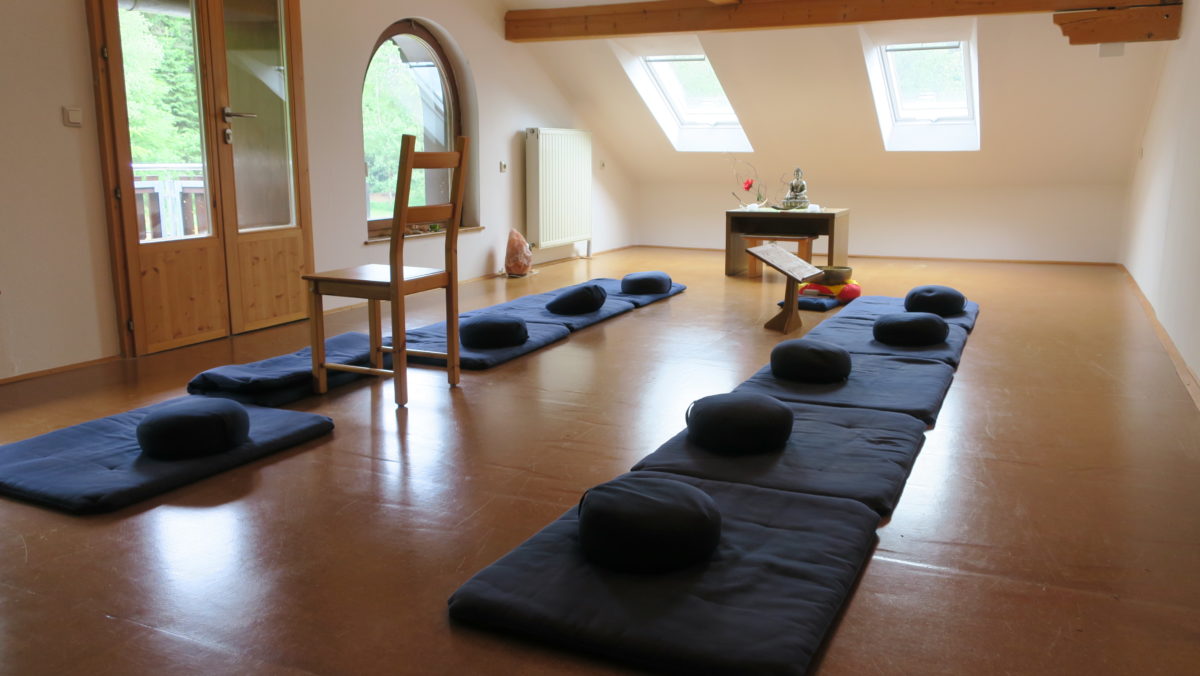
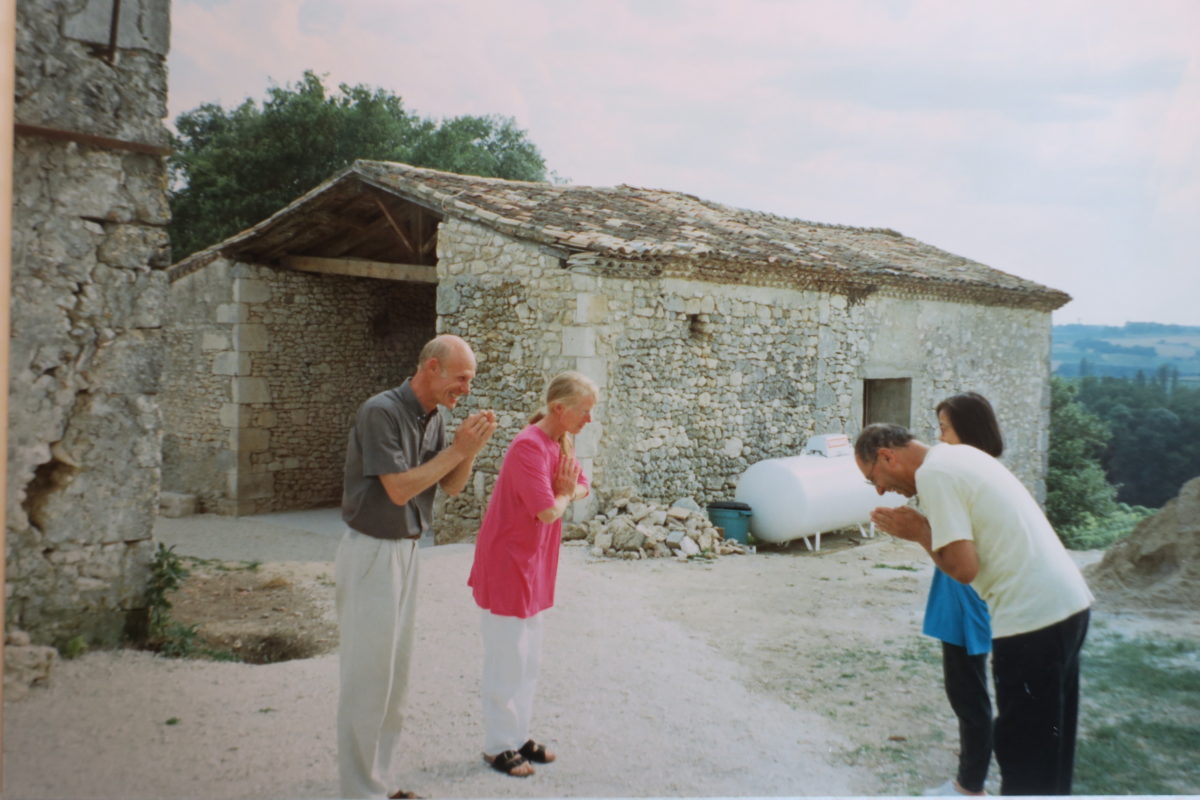
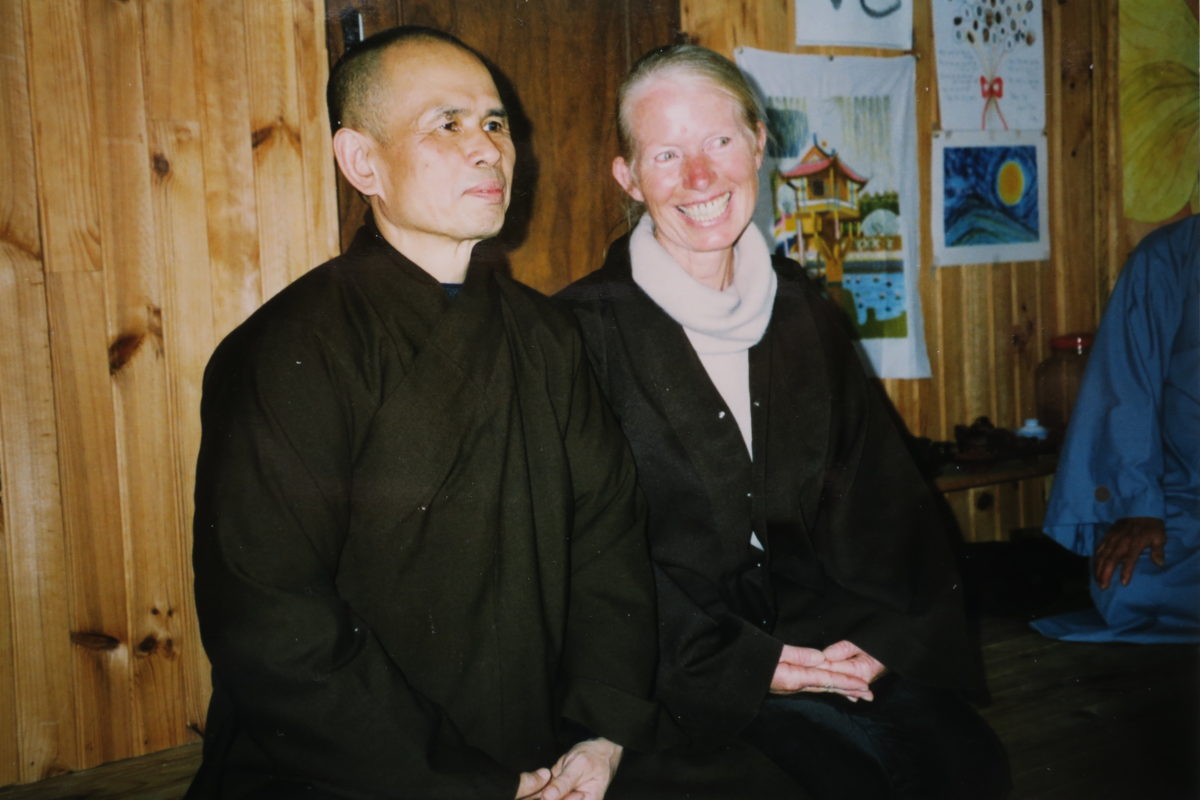
The next step in the training began when the nuns from Lower Hamlet moved to the newly purchased New Hamlet in 1996. Along with a Vietnamese lay sister and Dharma teacher, we became responsible for the only lay hamlet in Plum Village history. For a year, Lower Hamlet was a lay community, and the three of us were responsible for everything: meditations, Dharma discussions, shopping, cooking meals, and everything else. We learned to organize a small community, and live in harmony as Italians, French, Jews, Americans, Vietnamese, and Germans.
It was a great time. Nobody showed us what to do. This is a typical Asian way. You live with something; you learn by doing, and after a while, you know. It’s quite different from a Western approach.
In 1997, Karl Schmidt, who came often to Plum Village, had a great idea: “Why don‘t we have a practice center in Germany? Now you have the experience. You have lived here, guided the practice, taken responsibility, and for some reason nobody knows,” he chuckled, “you liked living in community for almost six years.”
Karl and his wife Ilona found a suitable property in the Lower Bavarian countryside: an old hotel, deserted for many years and in dire need of restoration. For about one year, a worker from a neighboring village worked to renovate the building with its twenty bedrooms, pub, and restaurant with some guidance from the founders. We believed it was essential to start the practice center only when the house was near completion and to begin community life by focusing on practice, not construction. Whatever was left to do, which was still a lot, could be done together in working meditation.
In 1999, we finally moved in with two Sangha friends who were committed and happy to join us. A new beginning, a new adventure!
The Practice Center and Sangha Building
“At the retreat center we can enjoy doing everything in mindfulness, and our friends will see the value of the practice through us—not through what we say, but through our being.
The residents can organize larger retreats occasionally to teach the art of enjoying life and taking care of each other. Mindful living is an art, and a retreat center can be a place where joy and happiness are authentic. Most retreats can be for preventive practice, developing the habit of practicing mindfulness before things get too bad.
But some retreats should be for those who are undergoing extreme suffering, although even then two-thirds of the retreatants should be healthy and stable for the practice to succeed. The depth and substance of the practice are the most important. The forms can be adapted.”—Thich Nhat Hanh
From the first day, our practice was the same as in Plum Village. The four of us sat together in the dining room, reciting the contemplations and eating in mindfulness. We practiced sitting and walking meditation every day. We determined to never, even in difficult or pressing situations, put the practice aside. Yes, we had a lot to do—running a big center and many retreats, being there for guests. But the main questions were: Is it in accordance with the life we would like to live? Does it fit into our practice? Is it really supportive, nourishing? These questions are still alive today.
Since the beginning, we inspired and attracted people to share our way of life and practice and live together in the spirit of the six harmonies. Our foundations include a strong shared intention and the deep desire to walk the path towards liberation—to be free from suffering, fear, confusion, and misperceptions and rediscover our open mind and heart.
Living and practicing the Dharma together, we create an environment that is conducive and nourishing for mindfulness, meditation, and insight. Through the deep commitment and joyous efforts in the past—we will celebrate our twentieth anniversary in May 2019—a vivid and tangible “field of awareness” has been created in which guests and retreatants easily enter.
Lessons Learned
By emphasizing a constant practice, gradually our small Sangha’s stability and happiness increased and radiated. People were intrigued by this concentrated and light atmosphere, noticing how we worked with calm and ease, in contrast to their own daily life. Most people returned again and again, staying for even longer periods—depending on their time and financial resources—to connect with the Dharma and the Sangha. Refreshed and with new insights, they returned to their families and workplaces. Coming back, they reported their experiences, both successes and difficulties.
Living, practicing, and working together as a small group in constant contact, can be—and is—very demanding at times. Not everybody has a deep, imperturbable desire to transform “at the base.” Different ideas and wishes, unconscious at first, surface after some time. People leave for various reasons. It’s so important not to hold to the idea of a long-term, consistent community. But don’t be afraid of the dynamics! Within the coming and going, you can trust the Dharma, the teachings, and the practice as a strong foundation supporting everyone.
Recently, people with different intentions have come to live and practice. People, especially young people, are increasingly aware of the possibility to grow and to mature out of our conditioned, biological survival mind into a higher state of consciousness. People have read and heard enough spiritual teachings, even Buddhist ones, and are turning to the practice experience, especially within secular frameworks. So we need to learn to adapt without losing the depth of our Buddhist background. That is a challenge!
The Continuation and Next Steps
There is definitely no solo continuation of us. Yes, we had some ideas in the past that didn’t work out. Now we see two aspects: A continuation, in the sense of Thay’s teachings, is what we transmit to the people who come. It’s not this place’s continuation; it is the Dharma’s continuation, our practice continuation. People who come tell us, “Ah, I have learned so much!” Many people have transformed by being here and by the way we’ve shared our practice. This is our continuation, and we are very happy with that.
But now, we have a new vision for Intersein’s continuation, and this is why we are so happy you are here [David and Vanessa]. Because of the international networks of people in Sangha, we imagine centers can be established and sustained by the larger global community. You have to stabilize them and have an elder in the greater Sangha. There are enough elder practitioners to hold centers together like we do at Avalokita center in Italy. The future of lay practice centers might be to get centers working together and sharing energy, manpower, and support.
It’s a kind of a network Sangha, where everybody knows each other. One can say, “Hey why don’t you come over, we need someone in the kitchen.” “Okay, we’ll send you someone good for that. And what support do you need?” We can shift people around in different communities. They don’t need to stay in just one place. Now, with the support of the global mahasangha, we can do it differently. We have to look with fresh eyes and a new energy. So let’s start again!
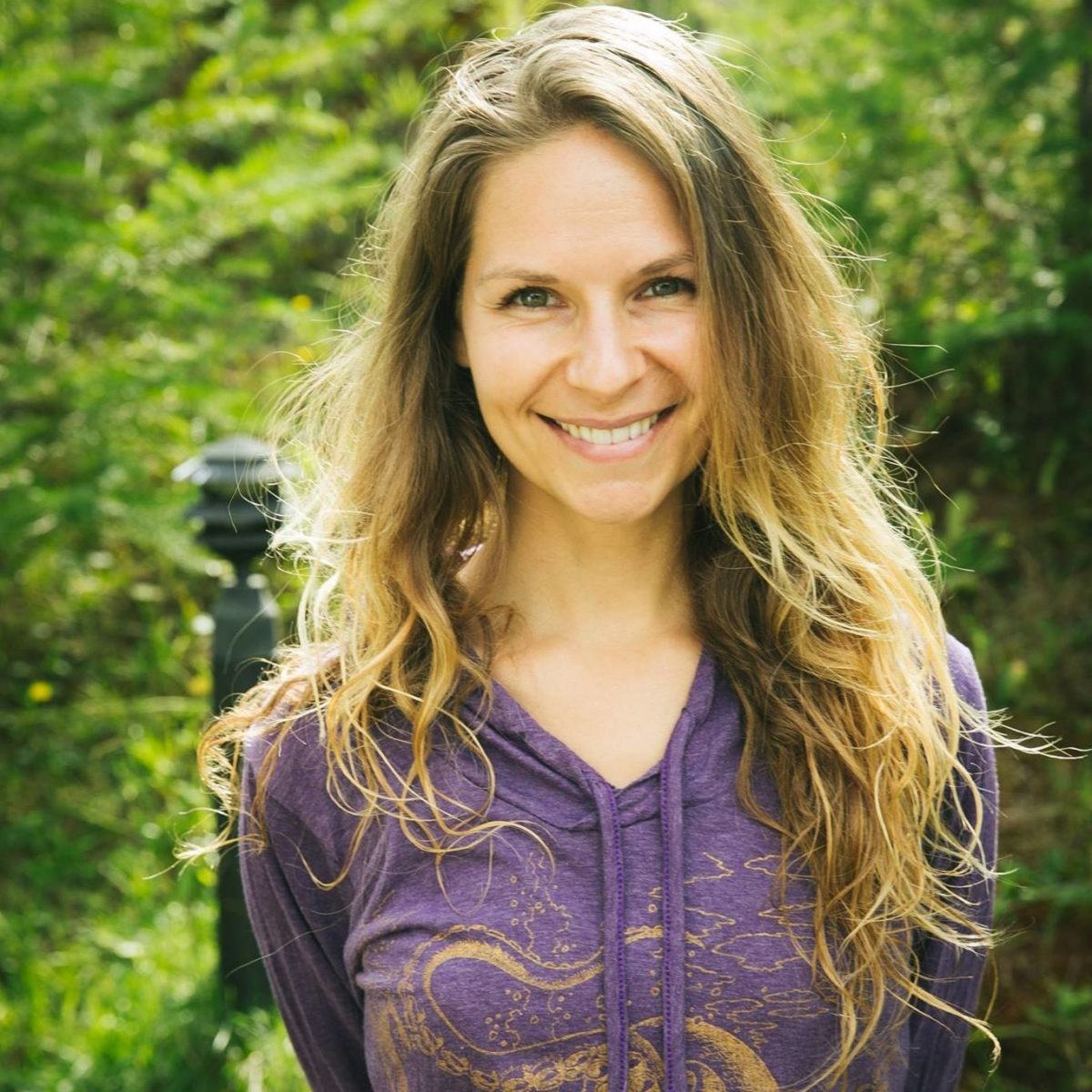
Vanessa Ixil Chavez Loucky, Joyful Journey of the Heart, began a daily mindfulness practice while working for a non-profit in Thailand in 2013 and has been committed to building mindfulness communities in the US and abroad since then. Last year, she traveled around the world with her partner David to research and share about lay intentional mindfulness communities in the Plum Village tradition. You can read their stories so far at sanghabuild.org.
